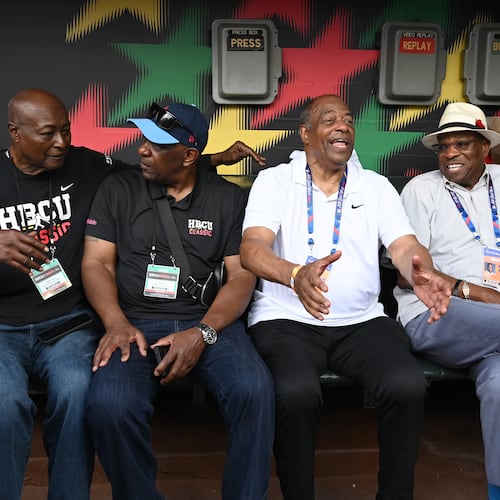The Braves drafted 20 players across the past three days, half of them pitchers. The picks included 16 college players, three of them from Georgia schools.
MLB’s amateur draft, in which the Braves and 29 other teams annually restock their organizations with young talent, ended Tuesday with the final 10 of 20 rounds being conducted.
Here are five takeaways from the Braves’ draft:
1. Prioritizing pitching
The Braves selected college pitchers with their first three picks: right-hander Ryan Cusick from Wake Forest in the first round, right-hander Spencer Schwellenbach from Nebraska in the second and left-hander Dylan Dodd from Southeast Missouri State in the third. Of the 10 pitchers the Braves drafted, four are 6-foot-5 or taller.
“I always say you can never have enough pitching,” said Dana Brown, the Braves’ vice president of scouting. “Pitching is never really blocked (from the big-league roster). You always need arms in the major leagues for a long season of 162 games. I think that’s how you win, that’s how you get to the postseason, and that’s how you have longevity.”
Cusick’s fastball has been clocked at up to 101 mph, Schwellenbach’s at 99 mph and Dodd’s at 94 mph, Brown said.
“That run of pitching,” he said of the Braves’ first three picks, “has a chance to unfold and really impact our prospects in the minor leagues as we try to build this thing.”
2. Top pick’s repertoire
Some draft analysts profiled Cusick as a reliever, but both he and the Braves see his future as a starter. A key, in addition to continuing to improve command of his pitches, is developing a change-up as a third pitch in a repertoire that includes the overpowering fastball and a good curveball.
“One hundred percent, I think the third pitch is going to be huge for me,” Cusick said Tuesday from Denver, where he attended the draft and All-Star game festivities. “My last Wake Forest game was May 23, so I had six weeks between then and the draft to work on the change-up and also the slider.
“The change-up is a relatively new pitch for me, and I’m understanding what I need to do with the pitch. It’s come a long way in the past year. It’s getting better and better and more consistent. It’s at the point now where it’s ready for game use.”
3. ‘Upside pick’ from Canada
With their first pick of the draft’s third day Tuesday, the Braves made an intriguing selection of Adam Shoemaker, a 6-6 high-school left-handed pitcher from Ontario, in the 11th round. The Braves plan to use the savings from “under slot” signings of some of their college draft picks to pay “above slot” value for a few high school picks, including Shoemaker, whose fastball has touched 95 mph, up from 90 mph last year.
“This is an upside pick,” Brown said of Shoemaker, who didn’t begin pitching regularly until two years ago. “What happens a lot is a lot of these high-school guys are disappointed when they don’t go in the first two rounds, and they realize, ‘Hey, I really want to play.’ And then their (financial) numbers come down, and that makes them a little bit more signable.”
Credit: Ben McKeown
Credit: Ben McKeown
4. Close to home
The Braves stayed local for three of their 20 picks. After selecting two Georgia Tech infielders, shortstop Luke Waddell and third baseman Justyn-Henry Malloy, in the fifth and sixth rounds Monday, they drafted Kennesaw State catcher Tyler Tolve, a Marietta native and Sprayberry High graduate, in the 17th round Tuesday.
“He came into (Truist Park) for a workout and a hit a few balls in the seats,” Brown said.
5. Eye-popping statistics
The Braves’ 13th-round selection, catcher Adam Zebrowski, put up some massive numbers this year at Division III St. John Fisher College in Rochester, N.Y.: a .500 batting average, .594 on-base percentage, .993 slugging percentage, 1.587 OPS, 20 home runs and 70 RBIs in 38 games.
“We looked at the numbers,” Brown said, “and we thought they were typos.”
Brown attributed finding Zebrowksi to “old school” scouting. “We’ve got a veteran scout (Brian Sankey) who got word about this kid and goes to see him,” Brown said. “This isn’t a kid that was on many people’s radar.”
About the Author
Keep Reading
The Latest
Featured



